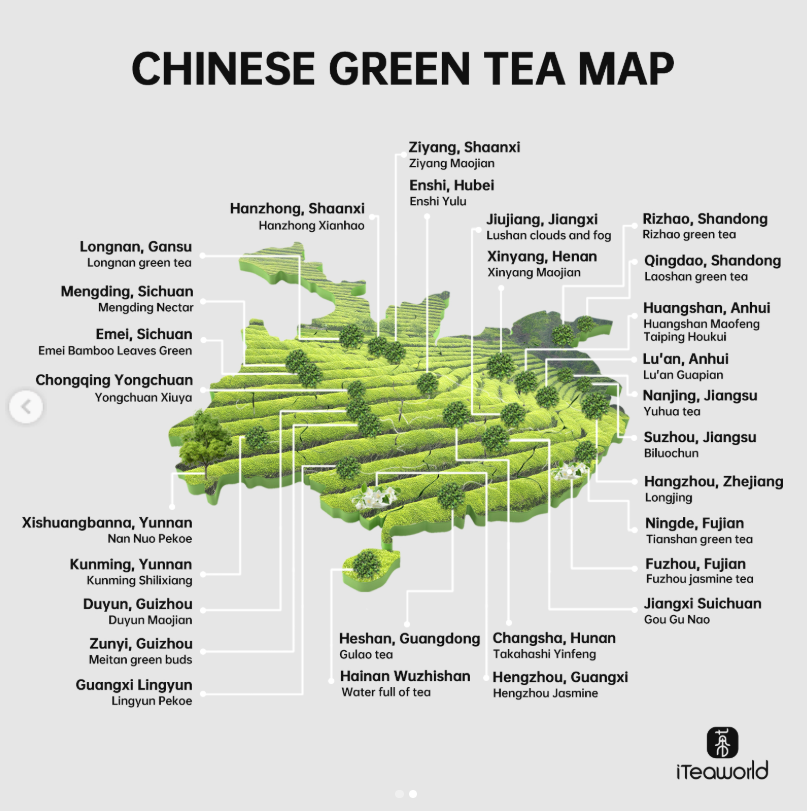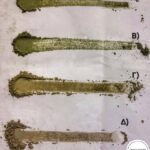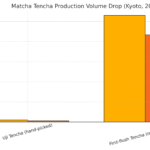Why matcha from different regions tastes unique

Picture this: you’re whisking up your usual cup of matcha. The color is vibrant green, the aroma is earthy and fresh, and that mellow, slightly sweet umami taste is just right. But what if you discovered that the matcha you’re drinking could taste completely different—even though the production process was the same?
That’s exactly what a new scientific study has examined. Researchers in China (Cui et al., 2025-Link at the end of this article) investigated how geography affects the flavor, aroma, and chemical profile of matcha produced from the same tea tree variety—but grown in four different regions. The results reveal just how much your matcha’s taste experience depends on where it’s from.

Four regions, One variety
In this study, matcha was made from the same tea cultivar (Fudingdabai) grown in four major Chinese regions:
- Hangzhou– Eastern China
- Wuyi– Central China
- Enshi and Tongren– Western China
For reference, high-quality matcha from Shizuoka, Japan was also analyzed using the same processing method.
Key takeaways from the study
1. Taste and aroma depend on geography
While all matcha samples were made from the same plant variety and processed the same way, their sensory characteristics varied noticeably.
- Wuyi and Enshi matcha had the best flavor among the Chinese samples. These had fresh, slightly bitter, and well-rounded profiles that were closer to Japanese matcha.
- Hangzhou and Tongren samples were more bitter and astringent, with less refined aromas and less overall harmony.
This suggests that if you’re looking for smoother-tasting Chinese matcha, Enshi and Wuyi might be the way to go.
2. More flavor compounds in western regions
Matcha from Tongren and Enshi contained a wider variety of non-volatile compounds—the molecules responsible for taste and nutritional benefits that aren’t released as aroma. These included:
- Amino acids (for umami and sweetness)
- Organic acids (for freshness and brightness)
- Flavonoids (known for antioxidant and anti-inflammatory activity)
This chemical diversity means that western Chinese matcha may offer a more complex and potentially more functional profile. However, degradation products could occur.
3. Wuyi matcha is closest to Japanese matcha
When researchers analyzed the chemical makeup of the samples, Wuyi matcha clustered closely with Shizuoka matcha. This suggests that Wuyi-grown matcha may offer a flavor and compound profile comparable to that of high-end Japanese matcha, even though it’s produced in China.
4. It’s what’s inside that counts
The team identified 1,131 unique non-volatile compounds in total. These included:
- 208 amino acids and derivatives
- 118 flavonoids
- 365 organic acids
- Other saccharides, alkaloids, lipids, and more
These compounds not only contribute to flavor, sweetness, bitterness, and astringency, but also play roles in health benefits like calming effects, antioxidant activity, and metabolic support.
What this means for matcha drinkers
If you love matcha for its taste or health properties, knowing where it comes from really matters. Even when the plant and the process stay the same, regional climate, soil, and altitude can change everything.
So when shopping for matcha, go beyond just “Chinese” or “Japanese”—ask about the region, variety, and processing. It’s the key to discovering matcha that fits your taste preferences and wellness goals.
ThessMatcha can help you go deeper
At ThessMatcha, we’re more than matcha enthusiasts—we’re a development hub for next-generation tea powder products. Whether you’re a food entrepreneur, formulator, or just passionate about matcha, we can help you:
- Select matcha powders based on their compound profile
- Create custom tea blends or powdered functional beverages
- Develop and quality test your own matcha products
- Formulate new matcha-products
Let’s make your matcha vision a reality, from leaf to launch.
Visit us at ThessMatcha or get in touch to start your matcha innovation journey.
You can find the paper at: https://www.mdpi.com/2304-8158/14/1/97

